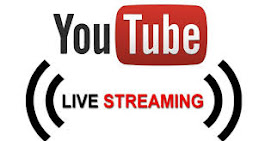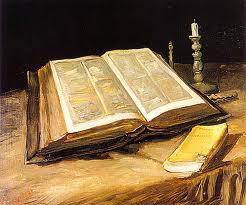From the Website of Vatican
links: http://www.news.va/en/news/pope-francis-encyclical-lumen-fidei-for-summer-rea Pope Francis' Encyclical Lumen Fidei for summer reading lists
2013-07-31 Vatican Radio
Speaking to pilgrims in Rome just days after the release of the Encyclical, Pope Francis said, “For the Year of Faith, Pope Benedict XVI had started this Encyclical, which follows on from those on charity and hope. I picked up this project and I have finished it. I offer it with joy to the whole People of God: in fact, especially today, we need to go to the essentials of the Christian faith, to deepen it, and to measure current issues by it. But I think that this encyclical, at least in some parts, can also be useful to those who are searching for God and for the meaning of life. I put it in the hands of Mary, the perfect icon of faith, that it may bring in the fruits that the Lord wants.” In part one of a five part series, Monsignor John Kennedy, an official at the Congregation for the Doctrine of the Faith, breaks down the encyclical for us in easy to understand segments. In today's program, he begins by explaining to Tracey McClure just what an encyclical is…. Listen to the conversation: Msgr. Kennedy: Like everyone, we have been listening for the last few weeks and months to Pope Francis at his weekly audiences and the Angelus prayer on Sundays from Saint Peter’s Square. The younger generations are following him on Facebook and Twitter, and the media in general, including especially the Vatican Radio website, have been covering his various visits and comments on world events. We are here today because, as you rightly say, his first encyclical has been published recently. The word encyclical is one that we might not be too familiar with. In fact I only heard it for the first time when I was training for the priesthood. Let’s explain what it is. According to its etymology, the word encyclical comes from Greek and means a circle and so it is best described as a circular letter. In the past it was rather difficult for most people to know that the Pope had even written an encyclical because they did not appear so easily in the public forum. It wasn’t for sale in most bookshops, perhaps only in religious book stores, and there was no on-line version. With the modern means of communication it is now extremely easy to know all about what the Pope writes because everything he says or does is available instantaneously and on-line in a multitude of different languages. If you go to the Vatican website, www.vatican.va you will see a link to the new encyclical by clicking on the image of Pope Francis or by putting in the word encyclical or Light of Faith into the search engine at the top right hand corner of the opening page. There you will see the text very quickly. Another thing might be especially interesting for our listeners. I wondered might there be an audio book version of the encyclical available on-line and I was fortunate to find one by simply by inserting the words lumen fidei audio into a search engine. In this way busy people could listen to it while they are on the move. Question: Who has the Pope generally got in mind when he writes an encyclical? An encyclical letter has a wide readership. Generally when the Pope writes an encyclical he is saying that he is concerned with matters which affect the welfare of the Church at large. The timing of some encyclicals sometimes coincides with great world events or sometimes marks an anniversary of some important event. If you look directly under the title of this or any encyclical letter you will see to whom it is addressed. Usually this is to Patriarchs, Primates, Archbishops and Bishops. They can also be addressed to priests and members of the lay faithful. However, it is really important to say that any person can read an encyclical, even if you are not baptized or not Catholic. Pope Francis’ first encyclical, dated 29th June, the Feast of Saints Peter and Paul, is addressed as is traditional to the Bishops, priests, deacons, consecrated persons and the lay faithful. The title of the letter is short and snappy: Lumen fidei. The light of faith. The theme of the encyclical grabs our attention really quickly because we all know and appreciate what light is. Our planet cannot survive without sunlight, for instance. Faith is something that we need to know about as followers of Christ. The Pope wants to tell us how faith is like light and address this question and to encourage us to deepen our faith. Question: This is the Year of Faith and so the timing and title of the encyclical are very good. What can you tell us about this? This encyclical, by the fact that it contains the word faith, is tied in a very close way to the Year of Faith which was inaugurated on the fiftieth anniversary of the opening of the Second Vatican Council. This is itself a clear indication that Vatican II was a Council on faith, inasmuch as it asked us to give first place to God in our lives, both as a Church and as individuals. In some ways it is retelling the commandments to love God as the first most important thing in our lives. One reason why the Church often looks back as it prepared to look forward is that, in recalling things from the past, the Church is saying that it never takes faith or anything it has received for granted, but knows that this gift of God needs to be nourished and reinforced so that it can continue to guide the faithful on their pilgrim way. In many ways it is like making your way through a forest and checking the map from time to time to make sure that you know where you have come from, where you are and where you are going. The Second Vatican Council was like a light, something like a light that you have on the roof on the inside of your car. The light of faith illumines our human experience from within, and accompanies the men and women of our time on their journey. Another thing that we can say about Vatican II is that it clearly showed how faith enriches life in all its dimensions, especially in the modern world. Question: If you have not read any of the documents of Vatican II, perhaps this is the year to start. Many people are amazed to find how relevant the texts are today, and would almost imagine that they had been written only recently. Would you agree? Yes, completely.Moving ahead to our own time, and 50 years after Vatican II, we know that Pope Benedict XVI wanted to make a link with what happened 50 years ago and for this reason he inaugurated the Year of Faith. In tying these two moments in history together, Pope Benedict was showing that here we also have an element of continuity. For this reason, in this encyclical we can see the handprints of Benedict XVI and the pen of Pope Francis. The encyclical supplements what Benedict XVI has written in his encyclical letters on charity and hope. Benedict XVI himself had almost completed a first draft of an encyclical on faith. For this Pope Francis is deeply grateful to him, and as his brother in Christ and has taken up his fine work and added a few contributions of his own. Question: As Catholics, are we obliged to read this encyclical or any of the documents of Vatican II? It is good to remember that there is no obligation on us to read this or any encyclical letter. We are free to do so if we wish. Perhaps there is also another connection between our freedom in this regard and the meaning of the Pope’s name. Francis, in fact, means a free man. My advice this is: there is something quirky in the make-up human person to the effect that, when told to do something, we will most likely want to do the opposite. Read it if you wish is my advice. You won’t be sorry if you do. Question: What is the structure of the encyclical letter? Before we speak about the encyclical, might I suggest to our listeners that at some stage they download it and read it for themselves. In this way they can take their time and ponder over a particular word or phrase which might help them. Even to read a paragraph or two every day as spiritual reading might be very beneficial. Let’s speak about the structure now. The letter has sixty paragraphs devoted to the fundamental religious question of our age such as “How are we to understand faith in a world which dismisses it as mere sentiment or personal choice and, moreover, does not even understand the concept of universal truth?” The Pope begins to answer this question in the first section by tracing the history of man’s response to faith to the present moment. Then there are four chapters, each drawn from a passage in sacred Scripture: 1. We have believed in love. (1 Jn 4:16)2. Unless you believe, you will not understand. (Is 7:9) 3. I delivered to you what I also received. (1 Cor 15:3)4. God prepares a city for them. (Heb 11:16) So there are four key words: believing, understanding, handing on and Christian hope. ***************Look out next week for part II of this five part series when Msgr Kennedy examines Chapter I of Lumen Fidei.... Vatican Website http://www.news.va/en links:
BIBLE LIGHTS PROMOTIONS
-------------------------------------------------------------------------------------------------------------
------------------------------------------------------------------------ --------------------------------------- |

Saturday, August 3, 2013
Pope Francis' Encyclical Lumen Fidei for summer reading lists
Subscribe to:
Post Comments (Atom)
















0 comments:
Post a Comment